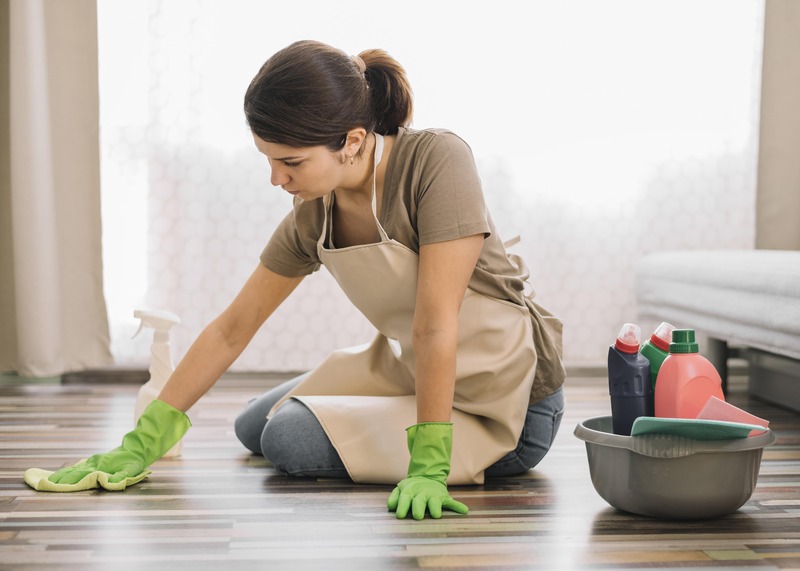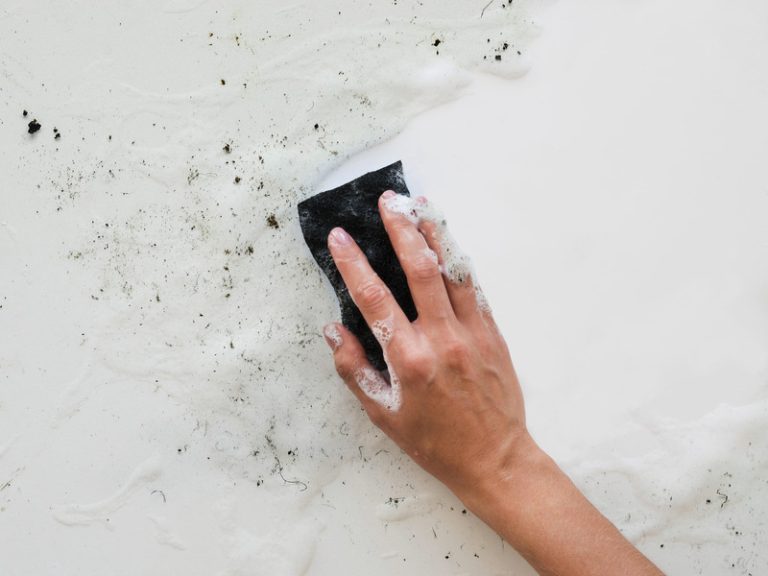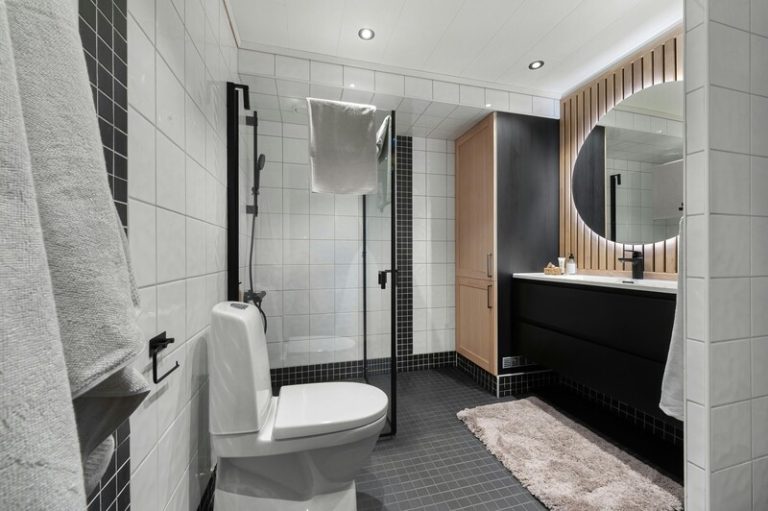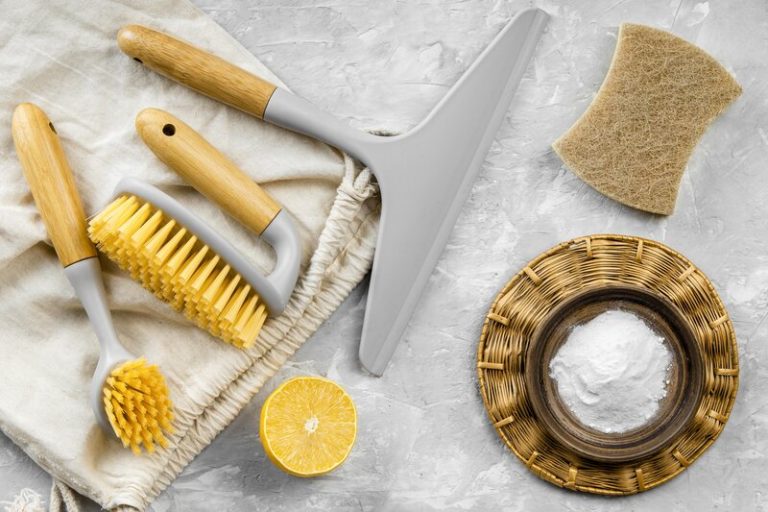Cleaning for hardwood floors is key to preserving their beauty and ensuring longevity. With their elegant appeal, hardwood floors can instantly enhance any space, but regular maintenance is essential to keep them looking their best. Proper cleaning techniques help prevent damage from spills, scuffs, and dirt buildup.
In this guide, we’ll cover the dos and don’ts of hardwood floor care, including recommended cleaning solutions and tools that protect your floors without causing harm. You’ll also learn step-by-step methods for a deep, effective clean to maintain their shine.
Whether you’re dealing with daily upkeep or stubborn stains, these practical tips will help you avoid common mistakes and keep your hardwood floors in pristine condition.
Cleaning Hardwood Floors: Dos and Don’ts
Cleaning hardwood floors is essential to maintain their beauty and longevity, especially in high-traffic areas where spills and scuffs are common, and the right cleaning solution can make all the difference.
Understanding the dos and don’ts of hardwood floor cleaning not only ensures that your flooring remains in optimal condition but also helps avoid damage from the wrong cleaning techniques or products.
For instance, using appropriate hardwood floor cleaners recommended by experts—such as those from the Good Housekeeping Institute—and avoiding harsh household chemicals can significantly affect the lifespan and appearance of your hardwood floors.
How to Clean Hardwood Floors?
To keep your hardwood floor looking shiny, establish a regular cleaning routine that is customised to its specific needs. Here’s the full explanation.
a. What Are the Best Cleaning Solutions for Hardwood Floors?
When it comes to cleaning for hardwood floors, selecting the right solution is key to preserving their finish. Eco-friendly cleaners are increasingly popular, offering effective results while being safe for both your home and the environment. Always test a small area before full application to ensure compatibility with your floor’s finish.
Consider cleaners formulated for specific finishes like urethane or oil-based floors. Choosing the right product helps maintain your floors’ shine without causing damage, allowing them to last longer and remain visually appealing.
b. What Tools Should You Use to Clean Hardwood Floors?
Using the right tools for cleaning hardwood floors ensures longevity and reduces the risk of damage. A dust mop works well for daily maintenance, while a microfiber mop provides a deeper clean without scratching the surface. For tougher dirt, a steam mop can be effective but ensure your hardwood can tolerate moisture before using it.
Soft-bristled brooms and damp cloths are perfect for wiping up spills quickly. Investing in these tools can make cleaning for hardwood floors efficient and help maintain their polished appearance over time.
c. What Are the Steps to Properly Clean Hardwood Floors?
Proper cleaning for hardwood floors involves dust mopping to remove dirt, followed by a microfiber mop with a suitable cleaner. Adjust your routine based on traffic and spills, ensuring you use products safe for your floor’s finish, whether it’s polyurethane or oil-based.
Regular maintenance, like sweeping and applying a fresh coat of finish every few years, keeps your hardwood floors in top condition. Following these steps ensures their longevity and preserves their natural beauty.
Tips and Tricks for Maintaining Hardwood Floors
Caring for wooden floors requires consistent care to maintain its beauty. Here’s what you need to know:
a. How Often Should You Clean Hardwood Floors?
The frequency of cleaning for hardwood floors depends on daily foot traffic and household factors like pets. For high-traffic areas, sweeping or dust mopping every few days is crucial. Deep clean every two weeks to maintain shine and prevent grime buildup.
Low-traffic areas may only require weekly dusting, but pet owners should sweep more frequently to remove hair and prevent scratches. Immediate cleaning of spills ensures your hardwood floors remain spotless and free of stains.
b. What Are Some Preventative Measures for Hardwood Floors?
Preventative care is key to keeping hardwood floors in top condition. Place area rugs in high-traffic zones, control humidity, and clean regularly to prevent scratches and dirt buildup. Consider using felt pads on furniture to avoid unsightly marks.
By implementing these preventative measures and using proper cleaning for hardwood floors, you can protect them from damage and maintain their natural beauty. Address spills promptly to avoid moisture damage, ensuring longevity.
c. How Do You Remove Stubborn Stains from Hardwood Floors?
Removing stubborn stains from hardwood floors requires careful attention. For minor stains, a soft cloth with oil soap works well. For tougher stains, gently scrub using a baking soda paste to avoid damaging the wood’s finish.
Always test cleaning solutions in an inconspicuous area first. Using safe solutions like vinegar for sticky stains and drying the area after cleaning ensures your hardwood floors stay beautiful and warp-free.
Common Mistakes to Avoid When Cleaning Hardwood Floors
Avoiding common mistakes when cleaning for hardwood floors can significantly impact their longevity. Using the right methods and products is essential for maintaining their beauty. Here are a few common mistakes to watch out for.
a. Using Harsh Chemicals or Abrasive Tools
Using harsh chemicals like ammonia or abrasive tools can permanently damage hardwood floors. These products can strip the finish and cause unsightly scratches, making it vital to choose cleaning products designed specifically for hardwood floors.
Opt for pH-balanced cleaners and microfiber mops for gentle yet effective cleaning for hardwood floors. This ensures they remain polished without compromising durability.
b. Not Drying Floors Properly
Not drying hardwood floors thoroughly after cleaning can lead to warping or swelling. Excess moisture seeps into the wood, causing damage that can be difficult to reverse. To avoid this, wring out mops and use fans or dehumidifiers to enhance drying.
Quickly drying the surface is key to effective cleaning for hardwood floors, preserving both their appearance and structural integrity.
c. Not Using Area Rugs or Mats
Failing to place area rugs in high-traffic areas can accelerate wear on hardwood floors. Rugs help absorb impact, reduce scratches, and prevent spills from reaching the floor, extending its life.
To complement your hardwood floors, choose non-slip rugs that match your home’s décor while providing extra protection during cleaning for hardwood floors.
d. Not Following Manufacturer’s Instructions
Ignoring the manufacturer’s instructions when cleaning for hardwood floors can lead to improper maintenance and void warranties. Each type of hardwood may require specific cleaners or techniques, depending on its finish.
By adhering to recommended guidelines, homeowners can prevent damage and ensure their hardwood floors last for years to come.
When it comes to cleaning for hardwood floors, regular care is essential for preserving their natural beauty and longevity. While basic maintenance can help, achieving a deep clean that truly protects your hardwood floors from damage requires expertise and the right approach.
Instead of spending hours scrubbing and worrying about using the correct products, let TEKA Cleaning take care of it for you. Our residential cleaning services ensure a meticulous, professional clean that not only restores the shine of your hardwood floors but also safeguards them from long-term wear. With our skilled team and eco-friendly products, you can trust us to maintain your floors’ elegance and keep them looking as good as new.
Don’t risk damaging your beautiful floors—call TEKA Cleaning today at 01223 751 544 to schedule a deep clean. Experience the difference of professional cleaning and enjoy the luxury of spotless, gleaming hardwood floors without the hassle!
Read also:











